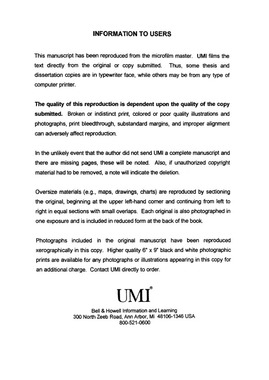| dc.contributor.advisor | Nicholas, Kenneth M., | en_US |
| dc.contributor.author | Dunlap, Melinda S. | en_US |
| dc.date.accessioned | 2013-08-16T12:30:42Z | |
| dc.date.available | 2013-08-16T12:30:42Z | |
| dc.date.issued | 1999 | en_US |
| dc.identifier.uri | https://hdl.handle.net/11244/5859 | |
| dc.description.abstract | A catalytic pinacol reaction that was enantioselective was also of interest. Three chiral titanium complexes possessed tethers: Brintzinger's catalyst or ethylenebis-(4,5,6,7-tetrahydroindenyl) titanium dichloride 1, (1S, 7R, 8R, 10R)-2,5-diisopropylcyclohexane-1,4-bis(1 '-indenyl) titanium dichloride 3, and (1S, 7R, 8R, 10R)-2,5-diisopropylcyclohexane-1,4- bis(4', 5', 7' , 8'-tetrahydroindenyl) titanium dichloride 4. Two sterically hindered chiral titanium complexes were also employed: bis(2-menthylindenyl) titanium dichloride 2, and 2,2-paracyclophane substituted salicylidene titanium dichloride 5. Significant enantioselectivity was observed only with titanium complexes 1 and 4 which produced ee's of 60 and 37% respectively. | en_US |
| dc.description.abstract | An efficient, catalytic, pinacol coupling of carbonyl species was developed. Numerous variables (metal reducing agent, catalyst, recycling agent, solvent, temperature, and mode of addition) were investigated with benzaldehyde. The optimal pinacol coupling reaction with benzaldehyde utilized manganese as the metal reducing agent, titanocene dichloride as the catalyst, chlorotrimethylsilane as the recycling agent, THF as the solvent, ambient temperature, and rapid additions. 1,2-Bis(trimethylsiloxy)-1,2-diphenylethane was produced in yields of 90% and higher and diastereoselectivities ranged from 90 to 95%. | en_US |
| dc.description.abstract | Benzaldehyde coupling reactions using chlorotrimethylsilane, and stoichiometric amounts of bi-[Cp2TiCl]2 or trimetallic [Cp2TiCl]2MnCl2 complexes in THF were performed. The bimetallic reaction generated the disilyl ether with a dl: meso ratio of 29:1 (24 h). The trimetallic mediated reaction eventually (24 h) yielded acetal with a dl:meso ratio of 31:1. The bimetallic intermediate was responsible for the highly diastereoselective pinacol product. | en_US |
| dc.description.abstract | Mechanistic studies were also conducted. Reactions known to generate acetal were run with an internal standard. The concentration of disilyl ether relative to acetal was changing with time; thus, it was concluded that disilyl ether was being converted to acetal. | en_US |
| dc.description.abstract | Aliphatic aldehydes were initially investigated using the optimal procedure. The yields ranged from 45 to 90% and diastereoselectivities ranged from 20 to 50%. Since the results were less satisfactory than those with benzaldehyde, modifications were made (metal reducing agent, catalyst, and recycling agent) to the optimal procedure both reaction. In all of the modified couplings, reaction rates were slower than the ones using the standard (optimal) procedure. Although reactions were slower, a diastereoselective acetal product ( de as high as 70%) was oftentimes observed instead of the disilyl ether product. | en_US |
| dc.format.extent | xi, 169 leaves : | en_US |
| dc.subject | Titanium Testing. | en_US |
| dc.subject | Aldehydes. | en_US |
| dc.subject | Chemistry, Organic. | en_US |
| dc.title | Titanocene-catalyzed stereoselective couplings of aldehydes. | en_US |
| dc.type | Thesis | en_US |
| dc.thesis.degree | Ph.D. | en_US |
| dc.thesis.degreeDiscipline | Department of Chemistry and Biochemistry | en_US |
| dc.note | Source: Dissertation Abstracts International, Volume: 60-08, Section: B, page: 3952. | en_US |
| dc.note | Adviser: Kenneth M. Nicholas. | en_US |
| ou.identifier | (UMI)AAI9941850 | en_US |
| ou.group | College of Arts and Sciences::Department of Chemistry and Biochemistry | |
